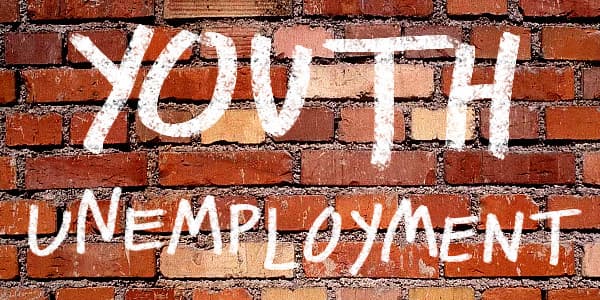We're loading the full news article for you. This includes the article content, images, author information, and related articles.
Youth unemployment in Kenya is driving political discontent, fueling mass protests and redefining civic engagement. This article explores the realities of jobless youth and the urgent need for policies that offer inclusion, dignity, and economic hope.

Byline: Nairobi, Kenya –
They are graduates without paychecks. Skilled but idle. Creative, connected, and angry. Kenya’s youth — who make up over 70% of the population — are also the face of a growing unemployment crisis that has become a powder keg of political discontent, now erupting in the form of mass protests, digital activism, and a rejection of the status quo.
Despite promises from successive governments to create jobs and support “the hustler nation,” millions of young Kenyans remain locked out of the formal economy, left to navigate a precarious maze of short gigs, online hustles, and shrinking hope.
According to the Kenya National Bureau of Statistics (KNBS) 2024 Economic Survey, unemployment among Kenyans aged 18–35 stands at over 67%. The problem is particularly acute in urban and peri-urban areas, where even university graduates report tarmacking — the colloquial term for job-hunting — for years without success.
Worse still, underemployment and informal work dominate the youth experience. A 2023 study by the World Bank found that nearly 80% of employed youth are in the informal sector, often earning below the minimum wage, without social protections or upward mobility.
“You study hard, graduate, and then you sit at home — or become a rider, hawker, or online trader,” said Brian, a 26-year-old ICT graduate from Eldoret. “We were told to dream big. Now we just want to survive.”
In the absence of stable employment, Kenya’s youth have turned to the so-called “hustle economy.” This includes boda boda transport, freelancing, drop-shipping, content creation, and informal vending. Platforms like TikTok, X, and Telegram have become spaces for both business and protest — where youth promote their wares by day and mobilize resistance by night.
Yet this survivalist economy is volatile. Fuel price hikes, digital taxation, import restrictions, and market saturation continually undercut these informal ventures. As a result, many Gen Z Kenyans see the system not just as broken — but as rigged against them.
“We are called lazy, entitled, ungrateful — but we are the ones who keep this economy alive,” said Amina, a self-taught graphic designer. “We just want to stop surviving and start living.”
Youth unemployment isn’t just an economic statistic. It’s a political time bomb. The July 2024 and 2025 protests revealed a generation that is deeply disillusioned with state promises — and increasingly unwilling to wait for change.
From the streets of Kisumu to the feeds of TikTok, jobless youth have become the engine of Kenya’s civic resistance. Their chants of “We are the system now” and “No jobs, no peace” reflect not just anger, but a redefinition of citizenship— one in which visibility, dignity, and accountability are paramount.
Unlike past protests driven by party politics or ethnic blocs, the Gen Z revolt is issue-based and intersectional. Youth are demanding not just jobs, but fairness — an economy that values their ideas, talents, and energy.
Successive administrations — from Vision 2030 to the Big Four Agenda to the current Bottom-Up Economic Transformation Agenda — have pledged to tackle youth unemployment. Yet many of these programs, including Kazi Mtaani, the Hustler Fund, and TVET expansions, have either underdelivered or been mired in inefficiency and corruption.
The Hustler Fund, touted as a financial lifeline for small-scale entrepreneurs, has drawn criticism for low disbursement rates, lack of capacity-building, and insufficient support for scaling up businesses.
Meanwhile, TVET graduates often find themselves trained for jobs that don’t exist, with limited industry alignment and employer partnerships.
“You can’t say you’re empowering youth while taxing every avenue they use to earn,” noted Prof. Bitange Ndemo, an ICT and public policy expert. “The contradiction is obvious — and they are calling it out.”
As public discontent grows, economists and civil society advocates are calling for a radical rethink of youth employment strategy, including:
Investing in creative and digital industries, where youth are already innovating despite constraints.
Aligning education with future job markets, especially green tech, AI, and remote work.
Supporting cooperative business models, allowing youth to pool resources and scale.
Decentralizing opportunities, especially in counties outside Nairobi.
But at the heart of the crisis lies something deeper: a generational demand for inclusion, recognition, and economic justice.
“We don’t just want jobs. We want meaning, we want fairness, we want a seat at the table,” said Michelle, a community mobilizer in Kayole. “If they don’t give us one, we’ll build our own table.”
Keep the conversation in one place—threads here stay linked to the story and in the forums.
Other hot threads
E-sports and Gaming Community in Kenya
Active 7 months ago
Popular Recreational Activities Across Counties
Active 7 months ago
The Role of Technology in Modern Agriculture (AgriTech)
Active 7 months ago
Investing in Youth Sports Development Programs
Active 7 months ago